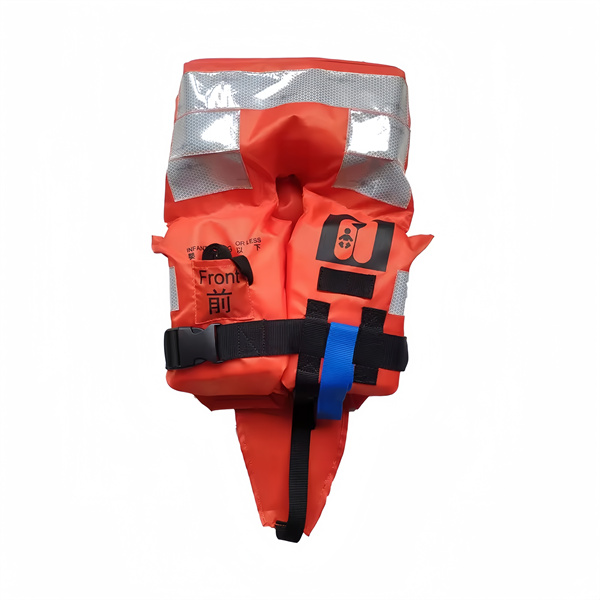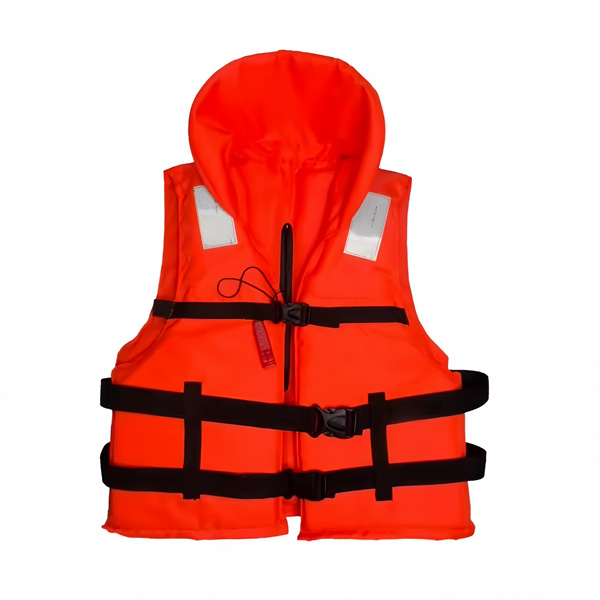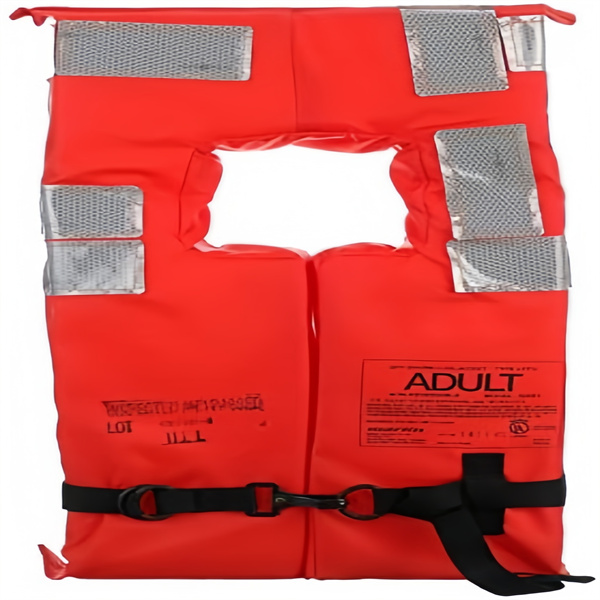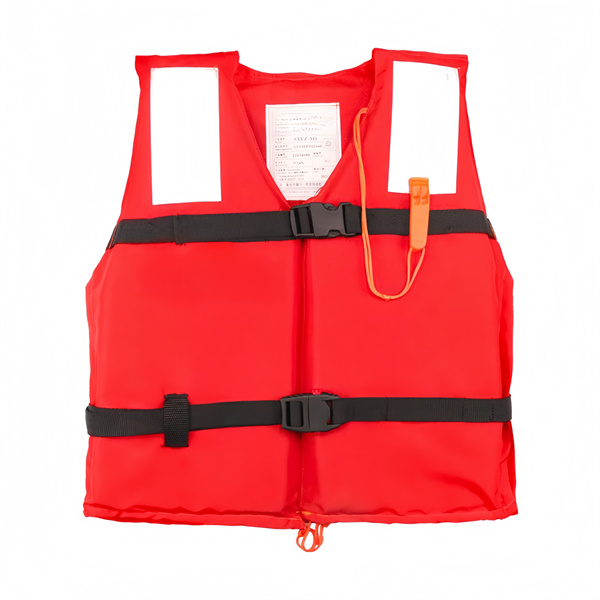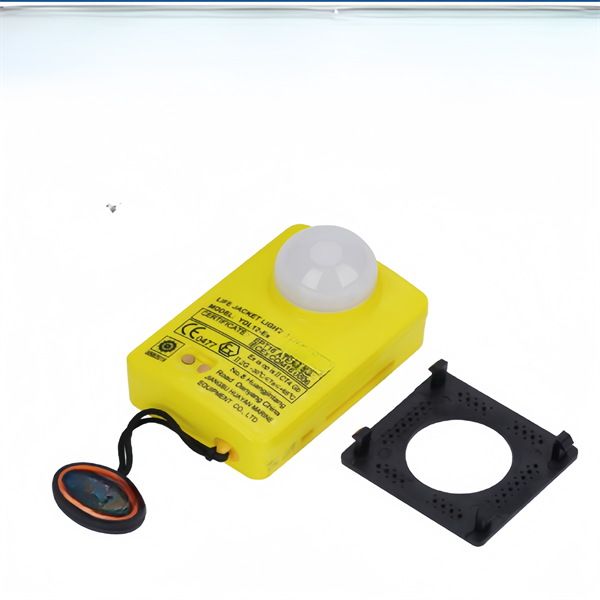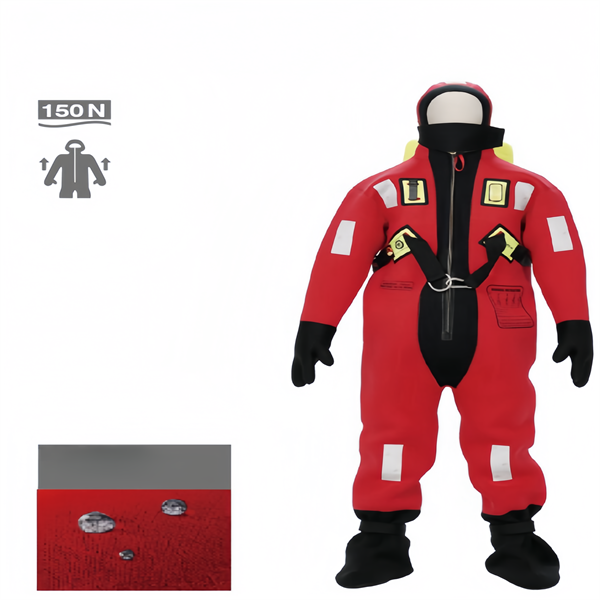How to Enhance Thermal Protection in Marine Life Jackets
In marine environments, particularly in regions with colder temperatures or prolonged exposure to water, the risk of hypothermia can become a critical safety concern. While traditional marine life jackets are designed primarily to offer buoyancy and ensure survivability through flotation, the next frontier of life-saving innovations is in enhancing thermal protection. Modern advances in design and materials transform marine life jackets into multi-purpose devices that are not just able to keep the wearer afloat, but also assist in maintaining core body temperature in case of emergency.
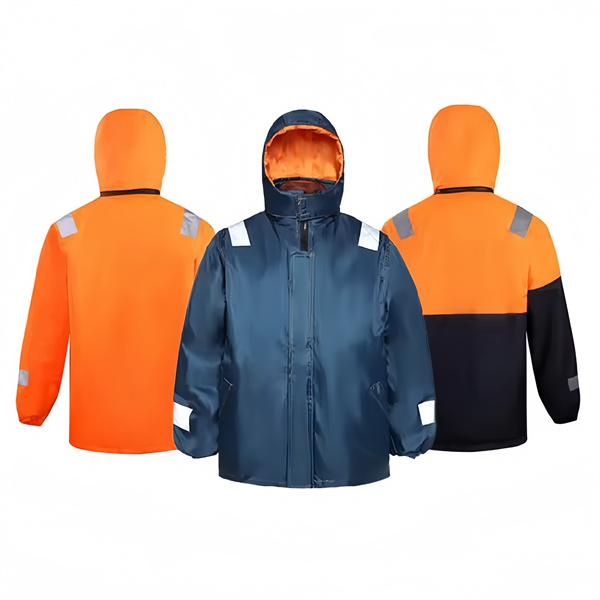
Table of Contents
Why Thermal Protection is Important in Marine Life Jackets
Thermal protection in life jackets is essential to protecting life by minimizing the risk of suffering from hypothermia, which is a silent, but fatal threat in marine environments.
Cold Water Immersion
Immersion in cold water is more than just a discomforting experience. It can quickly become life-threatening. If the water temperature is below 15°C (59°F), the human body may lose temperatures so rapidly that mental and physical functions begin to decline in a matter of minutes. If there is no proper protection against thermal loss people can suffer from the effects of cold shock, muscle weakness and even a state of unconsciousness for a long time before they can be rescued. Traditional life jackets offer buoyancy but they do not protect against the rapid loss of heat.
Beyond Buoyancy
The primary purpose of life jackets is to keep the wearer safe, the addition of thermal protection extends its function into a complete life-saving system. Life jackets that are insulated help keep body temperatures at a constant level and allow for the rescue teams to reach. This is crucial for off-shore, Arctic, or high-latitude situations where temperatures in the water can be extremely low and rescue times can be prolonged. The thermal protection can help maintain awareness, physical coordination and the desire to live.
Key Populations and Use Scenarios
The significance for thermal safety is amplified in certain conditions and for certain users. Commercial fishermen offshore oil workers coast guardsmen, and naval forces are often operating in freezing water conditions, and accidents can be fatal if not protected by thermal protections. Boaters who are recreational and adventurous are equally at risk, particularly during winter or high-latitude sailing conditions. In such situations thermally-protected life jackets provide a crucial shield to protect against elements.
Supporting Survival Standards and Regulations
The addition the thermal layer in life jackets recognized by international safety guidelines. Regulative frameworks like SOLAS (Safety of Life At Sea) and ISO standards are increasingly focusing on the importance of thermal performance of personal flotation device (PFDs). They acknowledge that hypothermia, and more often than drowning, is the primary fatality resulting from maritime accidents that occur in cold regions. Life jackets that comply with thermal protection standards increase survival and help ensure compliance with global maritime safety protocols.
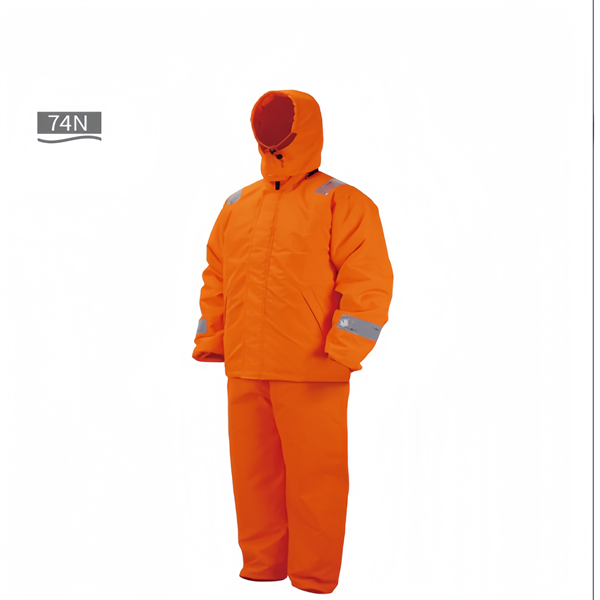
Key Technologies Enabling Thermal Protection in Marine Life Jackets
1. Insulating Materials
At the heart of thermal protection lies insulating materials that are designed to hold and conserve body heat.
Here is a chart that outlines advanced materials for thermal insulation in marine life jackets.
| Material | Key Properties | Thermal Benefits | Common Applications in Life Jackets |
| Closed-Cell Foam | Lightweight, buoyant, non-absorbent | Reduces heat transfer and retains warmth | The buoyancy and insulation component of the core |
| Neoprene | Flexible, waterproof, heat-retentive | Traps are a thin layer of water warmed by body heat | The inner or outer lining of thermal flotation jackets |
| Aerogel | Soft, moisture-wicking fabric holds warmth even when damp | Offers outstanding thermal resistance with very little thickness | Thermal inserts with high-performance (premium models) |
| Phase-Change Materials (PCMs) | Release and absorb temperature during phases of transition | Regulates the body temperature by taking in and releasing energy from thermal sources | Temperature-regulating layers in experimental designs |
| Reflective Foil Linings | Metal surfaces that are thin and smooth, which reflect infrared radiation | Reflects the body’s heat to its user. which reduces the loss of radiant heat | Inserts or inner layers in thermal marine jackets |
| Synthetic Fleece or Wool | Soft, moisture-wicking fabric, holds warmth even when damp | Warmth and comfort are guaranteed inside the jacket. | Linings for collars, hoods and the torso area |
| Multi-Layer Laminates | Combinations of insulating fabrics and barriers to vapors | Increases thermal insulation while maintaining resistance to wind and water | In the designs of all-weather and offshore jackets |
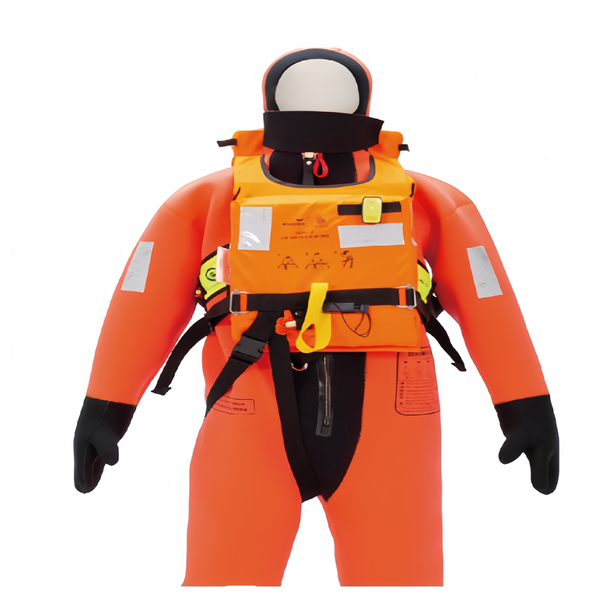
2. Reflective Inner Linings for Radiant Heat Retention
To combat further loss of heat To further reduce heat loss, reflective linings can be found to protect the interior on thermal life jackets. These linings reflect the body heat of the wearer back to the body, thus reducing the loss of heat from radiant sources. The techniques used in space blankets and other survival gear are now integrated into life jackets in order to create a thermal barrier to help maintain the body’s temperature. These linings are particularly effective when there is a lot of wind as well as water spray.
3. Integrated Hoods and High-Collar Designs
It is essential to protect the neck and head. is crucial in cold weather because these areas are the most vulnerable to loss of heat. Life jackets that are thermally enhanced come with built-in hoods constructed from waterproof or insulated materials. High-collar designs offer additional protection, protecting the lower and neck from wind and cold water. These pieces not only offer thermal protection, but also increase comfort for the wearer and lessen the likelihood of experiencing cold shock.
4. Thermal Protective Aids (TPAs) and Hybrid Configurations
In certain instances life jackets are often combined with or include elements of thermal protection aids (TPAs)–emergency garments that help reduce the loss of convective heat and evaporative heat. Advanced life jackets can have zip-in TPA liners, or they can be designed as hybrid flotation-immersion suits with buoyancy as well as near-full body thermal insulation. This type of suit is particularly useful for offshore or Arctic operations, where rescue might delay rescue.
5. Smart Textiles and Sensor Integration
The emergence of new technologies is beginning to expand the limits of thermal protection for marine equipment. Smart fabrics that are infused with heating elements, powered by small battery packs is being investigated for active thermal control. Furthermore, temperature sensors can be incorporated in the jacket to measure the wearer’s temperature at any time alerting rescue personnel if hypothermia risks are detected. Though still in development these innovative features represent an exciting new generation in life-saving equipment.
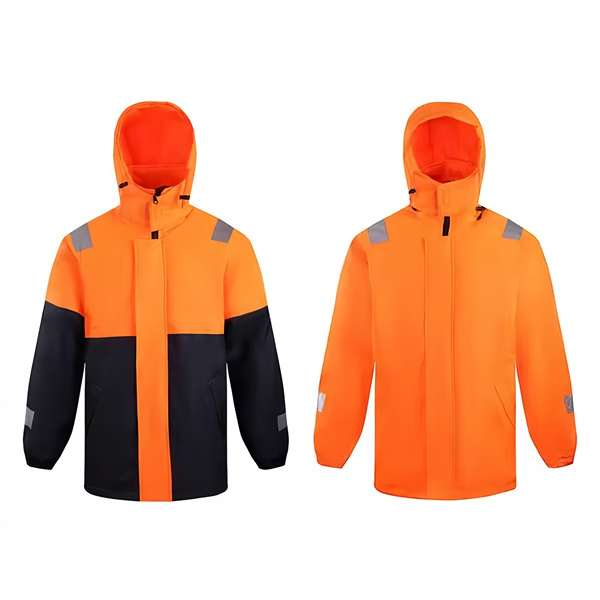
Design Features for Improving Thermal Protection Performance in Marine Life Jackets
Innovative design elements in modern life jackets are incorporated to improve thermal insulation, reduce heat loss, and enhance overall survivability.
1. Ergonomic Fit to Reduce Water Ingress
One of the key features in design to improve efficient thermal use is having a comfortable and ergonomic fit. A jacket that is fitted close to your body limits the flow that cold fluids circulate between skin and jacket and keeps the warmth. Modern designs incorporate elastic straps that can be adjusted, contours that fit and body-sealing closures that stop gaps from which water can get in, which improves the retention of heat.
2. Chin Guards for Neck Protection
The neck region is extremely vulnerable to heat loss and exposure to cold water here could accelerate the development of hypothermia. To prevent this from happening the current trend of life jackets has raised chin guards that are made of fleece lined or insulated fabrics. These features protect the lower and neck from the elements of spray, wind, or direct contact with water. They also contribute to the overall thermal stability.
3. Overlapping Flaps and Sealed Closures
To stop cold water from getting into the jacket, and to reduce the loss of convective heat, flaps that overlap and closed closures with seals are typically included in the design. Zippers are protected by storm flaps and closures with hook-and-loop or snaps are placed to block out the water and keep warm air within. These design elements allow for an air-insulating layer in between the outer layer and body.
4. Extended Coverage Areas
Some life jackets made to be used in cold conditions provide coverage that extends beyond the body. The additional protection provided to your lower back and thighs and arms help to keep body heat at bay in the most critical regions. In conjunction with a collar that is high with hoods, the complete body protection significantly increases thermal protection and helps to ensure survival in long periods of time in water.
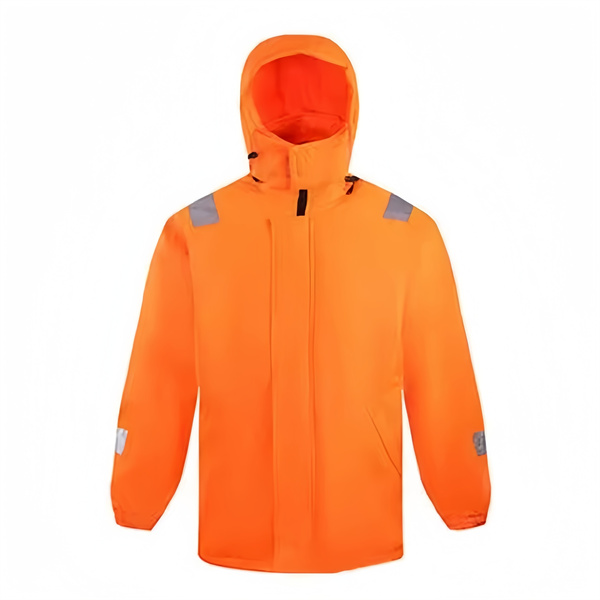
Standards and Certification for Thermal Life Jackets
| Standard | Issuing Body | Scope | Thermal Protection Requirements | Application |
| SOLAS (LSA Code) | IMO (International Maritime Organization) | Life-saving appliances used on ships | We recommend the use for Thermal Protective Aids (TPAs) or lifejackets; they must be compatible | Commercial vessels and passenger ships offshore platforms |
| ISO 15027 (Parts 1-3) | ISO (International Organization for Standardization) | Standards of performance for suits that are used in immersion | The device requires insulation for at minimum six hours to provide thermal insulation cold water. | Hybrid life jackets designed for professional use |
| ISO 12402-6 | ISO | Specificates additional safety features to lifejackets | It allows the integration of thermal protection to ensure a longer-lasting existence | Life jackets that have enhanced thermal and functional functions for survival. |
| EN ISO 12402-2 | CEN (European Committee for Standardization) | European Standard for Lifejackets with large flotation (>=275 N) | Additional thermal features to deal with extreme conditions | Commercial fishing, Offshore and industrial marine operations |
| Transport Canada TP 14475 | Transport Canada | Canadian Standard for lifejackets and PFDs | It is a good idea to consider compatibility with thermal protection clothes or other accessories. | Safety of marine life in Canadian waters |
| USCG Approval (46 CFR Subchapter Q) | U.S. Coast Guard | U.S. regulations for marine safety equipment | Does not require compatibility with suits for immersion or may require minimum insulation requirements for cold-weather gear. | Operation in the maritime sector of U.S. waters |
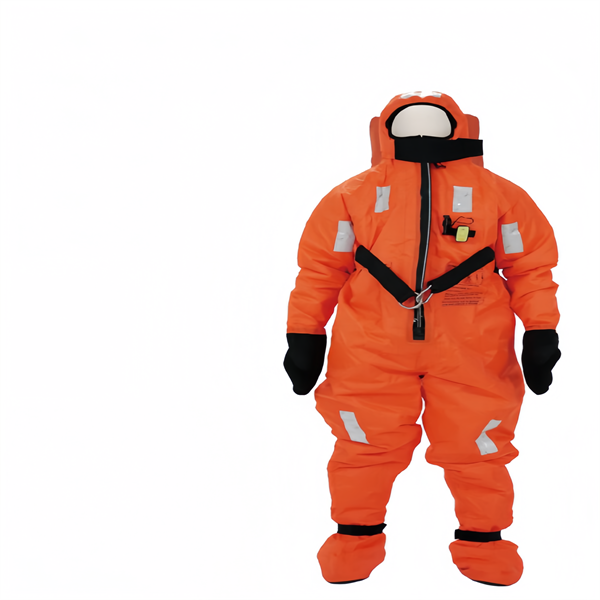
Future Trends in Enhancing Thermal Protection of Life Jackets
The latest innovations in material science, wearable technology and integrated designs are shaping the future of thermal life jackets.
1. Smart Heating Technologies
A number of exciting innovations is the integration with active heat systems into jackets. The lightweight and battery-powered heating elements weaved into the fabric could give a varying amount of heating to the torso, as well as important areas such as the back and neck. These systems are able to automatically regulate temperature in response to the conditions of the environment or input from a user and provide a dynamic thermal shield when exposed to prolonged cold water.
2. Intelligent Sensors and Wearable Monitoring
The future thermal life jackets are expected to incorporate biosensors to detect vital indicators in the wearer such as body temperature and heart rate and movements patterns. These sensors can send real-time information on rescue crews, assisting to assess the severity and urgency of a situation. When signs of hypothermia, or immobility are noticed the life jacket may activate heating systems built into the jacket or notify nearby personnel.
3. Ultra-Light, High-Performance Insulation
Innovations in materials like aerogels, phase-change material (PCMs) and graphene-infused fabrics are creating life jackets that provide superior insulation, without adding weight. These new-generation materials hold warmth efficiently while maintaining buoyancy and flexibility, making them perfect for thermal protection that is high-performance for both professional and civil applications.
4. Modular and Multi-Function Designs
The thermal life jackets are expected to be more flexible and multi-functional with components that could be removed or added depending on the requirements of the mission. For instance, detachable thermal lines, integrated hoods for immersion or sleeves that can be attached enable users to adapt to changing conditions in the environment without altering the whole device. This flexibility is particularly beneficial in search and rescue missions or naval missions as well as offshore drilling.
5. Enhanced Coverage and Ergonomic Fit
To reduce the loss of heat the future life jackets will be more likely to have full-body ergonomic designs which provide insulation to the hips, arms and even the legs. The suits will be designed to allow for greater flexibility and comfort while blocking wind and water more efficiently. A better fit will provide greater insulation and a lower chance of cold water leaking through the gaps.
6. Eco-Friendly and Sustainable Innovations
As sustainability is becoming a top priority for everyone, manufacturers are looking for eco-friendly materials that provide thermal protection while not harming the environment. Biodegradable insulation fabrics, recycled insulation coatings, and low-impact manufacturing techniques are expected to be a part of the coming generation of safety equipment for marine use and aligning energy efficiency with environmental sustainability.
7. Enhanced Visibility and Signaling Features
Apart from thermal protection, the future thermal life jackets could also include improvements in visibility, like the integrated lighting system, LEDs or electronic systems for signaling. These features increase the probability of being detected quickly in rescue operations, particularly in nighttime or low-visibility conditions as well as keeping the user comfortable and secure.
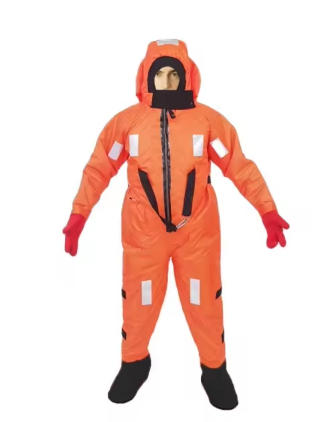
Summary
Enhancing thermal protection in marine life jackets is an essential step forward in life-saving technology. As rescue times in the most extreme marine conditions may be delayed, making sure that a the victim’s temperature is maintained could mean the difference between life and death. By combining buoyancy with advanced insulation, ergonomic designs and compliance with international standards, the marine industry has taken a proactive step towards comprehensive personal safety at sea.


